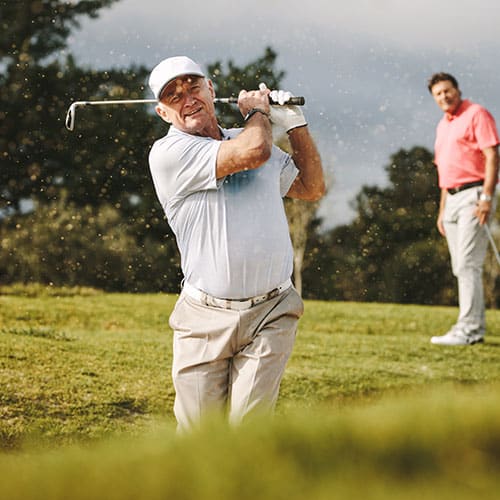1. What is a meniscal tear, and how is it treated?
Formed by two wedge-shaped pieces of cartilage located between the thighbone and shinbone, the most common causes of meniscal tears are the twisting of the knee or sudden decreases in speed. Dr. Greene will typically recommend a combination of rest, application of a cold compress, non-steroidal anti-inflammatory medications, and elevation for meniscal tears. It is also beneficial to build up the muscles around the knee, achieved through prescribed strengthening exercises that help return stability to the joint. Dr. Greene often recommends arthroscopic (minimally invasive) surgery for patients who suffer from severe instability in the knee joint due to a meniscal tear.
2. What are the most commonly injured ligaments?
Abnormal movement, overexertion, or direct force, forcing a ligament to stretch beyond its normal range, causes ligament injuries. The ACL (anterior cruciate ligament) and the MCL (medial collateral ligament) are the most easily injured ligaments in the body. The ACL and MCL connect the thigh and shine bones to form the knee joint. Located inside the knee, the ACL helps to prevent dislocation and provides stability. ACL tears are frequently non-contact injuries associated with athletic activities, and can occur during pivoting or changing speed, movements often found in soccer or tennis. The MCL is located on the outside of the knee and it prevents the knee joint from bending inwards. Typically caused by direct blows to the outside of the knee, MCL injuries are often associated with contact sports, such as football.
3. What are the treatment options for ligament tears?
Ligament injuries are typically classified as either a partial or a full tear. In cases of a partial tear, the knee joint is often still stable enough to support the body’ weight, and non-surgical treatments are commonly the best approach, as physical therapy, bracing, and anti-inflammatory medication can help an athlete return to pain-free play. Full ligament tears often require ligament reconstruction surgery to return full joint functionality. Ligament reconstruction surgery is typically performed using minimally invasive techniques, and reconstructs the torn ligament through grafts of tissue.
4. How is runner’s knee treated?
Caused by overuse or trauma, Runner’s knee results in irritation to the nerves in the kneecap (patella) and tears in the surrounding tendons. Athletes who participate in sports that involve repetitive bending of the knees, such as running, biking, and basketball, have a higher risk of developing runner’s knee. Runner’s knee can result in the misalignment of the joint’s components, often creating an uneven distribution of weight, inflammation, and severe pain symptoms.
5. How is Achilles Tendinitis treated?
Achilles tendinitis is an overuse injury that causes inflammation, swelling, and pain. The progression of Achilles tendinitis is often accelerated by increases in exercise intensity and bone spurs. The majority of Achilles Tendinitis cases do not require surgical treatment. Rather, a three-week regimen that involves a combination of rest, anti-inflammatory medication, daily calf stretches, physical therapy, and orthotics are often recommended. If pain symptoms go untreated for an extended period-of-time or if symptoms do not decrease, then a 3 to 6 month treatment routine is typically suggested. Dr. Greene will create a custom routine of conservative treatments, based on the cause and extent of the injury, to help decrease pain symptoms.

Sports Medicine
- Arthroscopic ACL Reconstruction
- Meniscus Tears
- Rotator Cuff Repair
- Sports Medicine FAQs